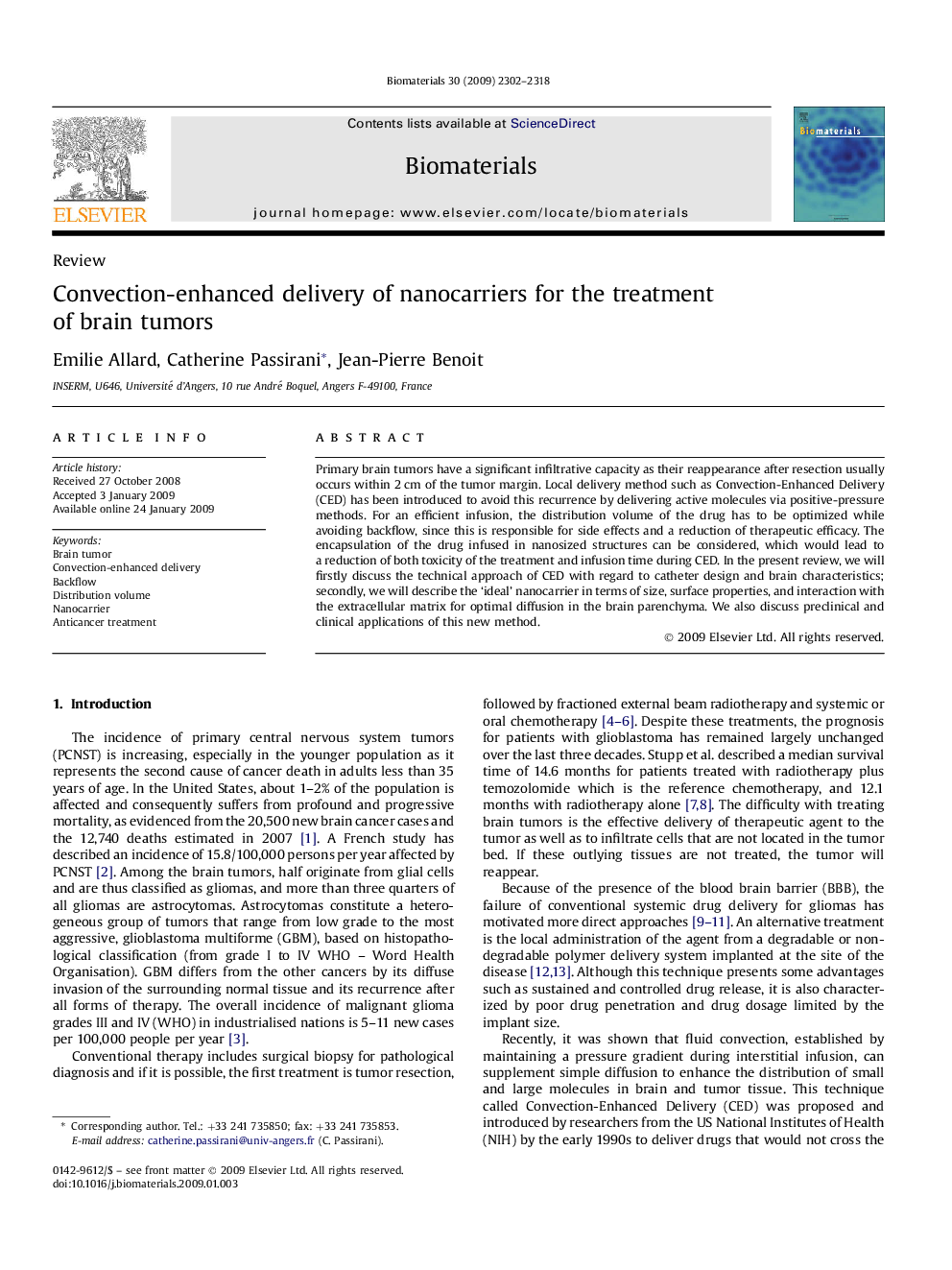| Article ID | Journal | Published Year | Pages | File Type |
|---|---|---|---|---|
| 10515 | Biomaterials | 2009 | 17 Pages |
Primary brain tumors have a significant infiltrative capacity as their reappearance after resection usually occurs within 2 cm of the tumor margin. Local delivery method such as Convection-Enhanced Delivery (CED) has been introduced to avoid this recurrence by delivering active molecules via positive-pressure methods. For an efficient infusion, the distribution volume of the drug has to be optimized while avoiding backflow, since this is responsible for side effects and a reduction of therapeutic efficacy. The encapsulation of the drug infused in nanosized structures can be considered, which would lead to a reduction of both toxicity of the treatment and infusion time during CED. In the present review, we will firstly discuss the technical approach of CED with regard to catheter design and brain characteristics; secondly, we will describe the ‘ideal’ nanocarrier in terms of size, surface properties, and interaction with the extracellular matrix for optimal diffusion in the brain parenchyma. We also discuss preclinical and clinical applications of this new method.
